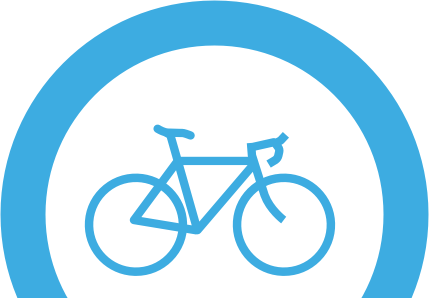HOW THE NUTRITION PLAN WORKS:
This 12-week nutrition plan is delivered to match your training programme, and introduces some concepts to maximise performance, assist body composition control and help your body recover. Each day has three meals, and one snack to be used at any point in the day – try to use your hunger as a guide for whether you need it. In addition there is a focus on eating well around training, and we have detailed pre- and post-nutrition additions when needed, as well as a guide for your intake on the bike. Your plan provides detailed meals matched to the specific training session each day.
While interchanging options will not match your requirements exactly, you are able to substitute foods in the same food group for others you may prefer while sticking to similar portion sizes. Over the course of the weeks your energy, carbohydrate, protein and fat intake fluctuate to match the daily needs of training as well as the larger goal of each training block. The plan attempts to use ingredients together over a few days to avoid waste – a good habit to stick to making it easier to have foods prepped for the next meal in advance. Most meals are suitable for the whole family; but where certain foods are omitted this is primarily aimed at your requirements and portion sizes are specific to your needs. Your family members can adjust their plates accordingly to a more balanced approach.
Foods can be interchanged if they don’t appeal to you or if you can’t find them. Feel free to swop like for like from the below lists; keeping portions in check is the main goal.
SWOP OUTS
Foods can be interchanged if they don’t appeal to you or if you can’t find them. Feel free to swop like for like from the below lists, keeping portions in check is the main goal.
PROTEIN RICH FOODS
- Meat, chicken, fish, lamb, venison, ostrich can all be swopped with each other keeping portions like-for-like
- 1 scoop whey protein for 3 eggs, 6 egg whites, 200g Greek yoghurt or 80g meat/chicken/fish
- Greek yoghurt for plain yoghurt plus 1 tsp whey protein
STARCHY FOODS
All these are inter-changeable
- 1 slice bread
- 3 Pro-vita
- 20g rice/pasta/cous cous (uncooked)
- ½ cup beans
- 70g potatoes/ sweet potatoes
- 3 baby potatoes
- 1 cup butternut
FRUIT
Any fist-size fruit can be swopped for another, or 30g dried fruit
FAT RICH FOODS
The following items are all interchangeable
- ¼ avocado
- 1 tsp oil
- 1 Tbsp nut butter
- 1 Tbsp any nuts /seeds
- 1 Tbsp lite mayo
- 20g cheese
VEGETABLES
- Any non-starchy veg can be interchanged, eaten raw or cooked and added as extras to any meal to add bulk.
- Lettuce and other leafy greens, tomato, cucumber, celery, olives, mushroom, marrow, peppers, onion, garlic, broccoli, cauliflower, green beans, brinjal etc.
** Vegetarian sources of protein such as soya, tofu, tempeh and quorn can be substituted for animal proteins. Other sources like beans, lentils and chickpeas are options too but might need to accompany a reduction in portions of starchy foods. Vegetarian protein powders like soya, pea, hemp are also suitable alternatives.

LEARN ABOUT YOUR EATING
The first six weeks, that combine base and strength training, is the ideal time to introduce all the concepts that will serve you well over the programme and can be carried over into the rest of your cycling training. This is a good time to learn about your eating, how it effects your performance, health and recovery, what portion sizes are suitable for you and how you might adjust your intake to match your training demands.
This is also the time to get most of your body composition goals achieved while training volume increases but quality of training and intensity is lower. We introduce concepts of fueling and hydrating around training here too. You will notice certain sessions require a pre- or post-ride snack while others can be effectively fuelled with normal meals.

A WORD ON HYDRATION
We have recommended using water or carbohydrate free electrolyte (sodium, potassium) drinks for easy and fasted training sessions. We have also offered your drink of choice for intermediate sessions, if you trying to lose some weight stick with water or electrolytes here otherwise a carbohydrate drink can be used. For longer or higher quality sessions we have advised using a 6-8% carbohydrate drink (6-8 g carbohydrate per 100 ml) for better absoprtion and hydrating properties. Choose one you are familiar with or try a few until you find one you are comfortable consuming. If the volumes suggested are well above your habitual intake, start smaller and increase it over the weeks, your gut will learn to absorb and use fluids and fuels if you train it.

REPLACING LOST FLUIDS
We have suggested adding extra fluids according to thirst, or to match your sweat losses. You can keep track of habitual weight changes during sessions to assess your average sweat loss. One kilogram of weight loss equates to one litre of sweat. Weigh yourself before and after a session, record the difference in weight and account for any fluids consumed in between to get your sweat loss. You can convert this to an hourly value. After a few sessions in various conditions (hot, cold, windy) and at various intensities, you will start to see your typical losses so you can replace fluids accordingly. Try to keep your losses to less than 2 or 3% of your body weight.

SECRETS OF SHOPPING
- Buy your produce from the butcher and grocer at your supermarket, you can then get each portion pre-cut/weighed for you using your weekly shopping list
- If shopping once a week freeze the fresh produce you require later in the week. Alternatively a Sunday shop and a midweek top up is good split
- Leftovers or unused ingredients can be used or frozen for later use, this is especially useful for fruit, wraps, bread, meat and fish
- Fresh, tinned or frozen produce are all fine choices
- Whey protein is often an easy way to fortify meals or snacks but is in no way required, we have given equivalent foods that can be interchanged. If using any supplement check for quality and safety
- Create the environment – Spend the first weekend before you start your plan shopping for produce, removing tempting foods and creating a nutrition environment that promotes success. Having access to everything you will need makes sticking to the basics easier